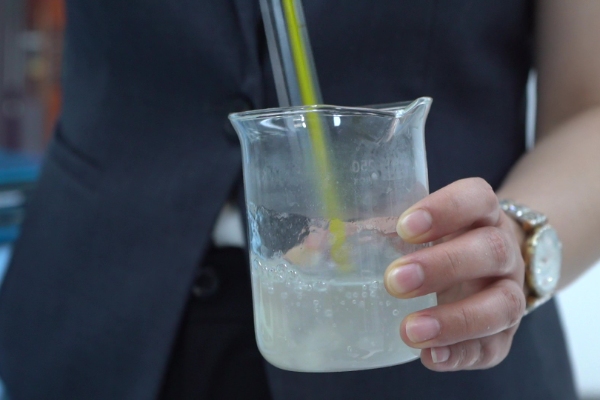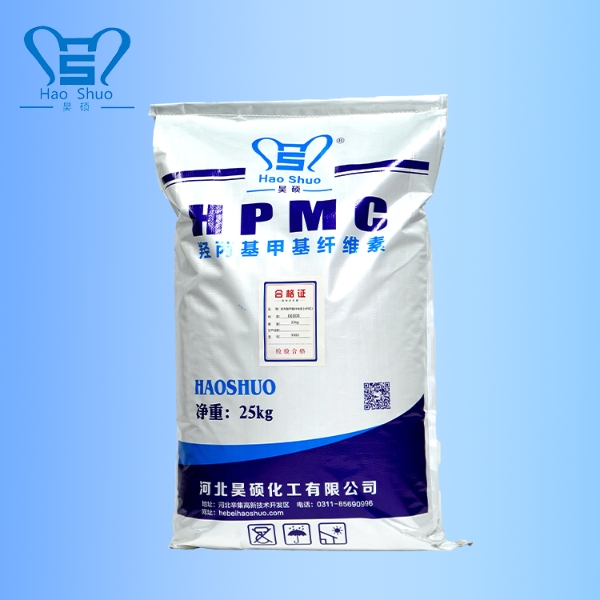Putting tiles on the wall or floor of the bathroom or kitchen is like solving a puzzle. The pieces need to stick together. Otherwise, the whole thing would fall apart. The modern-day tile adhesive – Hydroxypropyl Methylcellulose (HPMC) has universal application, yielding great results. This cellulose product acts as a tile adhesive, along with enhancing the water retention, workability, bond strength, and more for a longer-lasting finish.
Let’s take a look at how HPMC boosts performance, why it is essential for contractors and DIYers, and how it saves time, effort, and headaches.

HPMC is a white, powdery chemical product is derived from natural cellulose material through chemical process modifications. It is like glue’s best friend; it’s a non-ionic water-soluble cellulose ether that forms a thick, viscous solution as soon as it touches water. In tile adhesive, HPMC controls the plasticity and working time of tile adhesive just as sugar for a special-purpose cake. A tiny amount of just 0.2% to 0.6% in dry mortar mix can create a huge impact.
Why does this matter to you? No matter the scale, HPMC will enhance the performance of any wall tile adhesive for small or large projects. It will help you to overcome the everyday problems related to tiles, such as tile slippage, weak bonding, and cracking of the bedding. Let’s break down its key contributions.
Tile adhesive is a cake batter-like substance that requires the right amount of water to set. When there is a lack of water, the cement in the adhesive cannot hydrate properly and results in weak bond strength and crumbling of mortar. HPMC is great to ensure proper curing since it retains water in the mix. It will create a film on the adhesive surface, which will slow down the process of evaporation. Further, it will allow sufficient time for the cement to set.
That’s a big issue and particularly relevant to porous tiles or dry substrates that soak up water like a sponge. HPMC eliminates the need for soaking tiles and wetting surfaces, allowing you to prep faster. HPMC may increase water retention level by as much as 90%. It ensures constant hydration in hot or dry climatic conditions. The result? Less strength and more cracks to help keep tiles in place.
Have you ever made an attempt on laying some tiles but accidentally placed one a bit wrong? The adhesive will dry faster if you don’t use HPMC. HPMC allows for a longer time in which you can adjust your tiles before the adhesive sets. By slowing the speed at which moisture evaporates, it will keep the adhesive workable for a longer period, often in excess of 30 minutes. The length of time will depend upon the formulation used.
Life-saving for big jobs or complex patterns of work. Imagine making a mosaic wall with tiles. HPMC allows you to shift the tiles around until they are perfectly placed, as the glue does not set immediately. It’s like having someone there to help you get it right.
A tile that pops off the wall is every tiler’s nightmare. HPMC improves the joining force between tiles and wall or floor surfaces like concrete or gypsum. Because it guarantees uniform cement hydration, it guarantees a strong, flexible film, which can cope with stress, stress, temperature changes, and moisture.
HPMC, for example, with its viscosity between 75,000 and 100,000 mPa ·s in some grades, has a tacky and cohesive character enabling a strong grip on tiles. Heavy tiles or verticals. Weak bonds will either slip or detach and fail.
Your tiles, be they ceramic, porcelain, or natural stone, will stay in place with HPMC.
Here’s how HPMC enhances bonding.
● Uniform Hydration ensures cement cures evenly for maximum strength.
● Flexible film absorbs limited crack formation due to substrate movements.
● Compatibility: Accommodates all kinds of substrates, cement, plasterboard, and more.
Tiling vertically is tough since the tiles don’t want to stay put, resulting in an uneven surface or a complete collapse. The thickening abilities of HPMC help to increase the viscosity of the adhesive and give it adequate grip to hold tiles in place. This anti-slip revolutionizes wall tiling, preventing tiles from slipping before the adhesive sets.
HPMC is like a harness, which secures your tile from slipping on slanted surfaces. It’s especially beneficial for large-format tiles, which are heavier and more likely to slip. When you use HPMC to tile, you are assured of the stability of your work and that it won’t collapse on the floor.

Nobody wants to wrestle with a sticky, clumpy adhesive. HPMC enhances workability by improving the smoothness and spreadability of the adhesive. Its properties reduce friction so you can trowel the mix out evenly without having to fight lumps or air pockets. This makes the layer smooth and minimizes tile lippage effect for a beautiful finish.
HPMC’s magic lies in its ability to balance viscosity. If it’s too thick, it won’t be easy to get the adhesive on. If it’s too thin, it won’t hold. A Chinese HPMC factory like HaoShuo produces grades tailored for tile adhesives, with viscosities optimized for easy application and strong performance. The result? No matter if you’re a pro or an amateur DIYer, you’ll save effort, time, and frustration.
Tiles endure frequent stresses like foot traffic, moisture, temperature fluctuations, and even shifting structures. HPMC helps in improving adhesive durability by adding flexibility. This lowers the chances of cracking originating from substrate shift or heat expansion. The substance has water-resistant properties, so it does not get damaged due to moisture. It is ideal for bathrooms, kitchens, or outside.
A brief comparison of adhesives with and without HPMC.
Here’s a quick comparison of adhesives with and without HPMC:
Feature | With HPMC | Without HPMC |
Water Retention | Up to 90% retention | Rapid moisture loss |
Open Time | 20–30+ minutes | 10–15 minutes |
Bond Strength | High, flexible bond | Weaker, prone to cracking |
Slip Resistance | Excellent, holds heavy tiles | Poor tiles may slide |
Workability | Smooth, easy to spread | Clumpy, uneven application |
When you use HPMC, the tiles on your surfaces will not come off for years. So, you can avoid spending money on repairs or retiling.
HPMC is not only great for performance but also for the planet. That’s an eco-safe co-polymer and low-hazard product for easy and safe application. You can use the solutions from leading manufacturers in any location without any worries, as they do not cause any harm. Also, increased adhesive efficiency uses up less cement t as a result, concrete usage is reduced.
Not all HPMC is created equal. Grades differ based on thickness, substitution rates, and particle size. For common tile adhesives (small wall tiles or floor mortar), a dosage of 0.2 – 0.3% with a high viscosity (75,000 – 100,000 mPa·s) will perform well. The recommendation for high-performance adhesives (large tiles or stone) is 0.4%–0.6%. The temperature and humidity affect the grade (to an extent). Higher temperature means less water retention. Choose an appropriate grade suitable for your conditions.
Here’s a quick guide to picking HPMC.
● Normal tile adhesive consists of 0.2-0.3% of HPMC, having high viscosity, which is used for small tiles.
● Standard adhesive for wood and heavy tiles. 0.3-0.4% to provide extra grip
● 0.4-0.6% stone or outdoor high-performance adhesive.
A supplier can help you find the perfect formulation for your project!

HPMC is a multi-utility additive that enhances the performance and engineering properties of tile adhesives. It handles the hard jobs, such as working on slippery walls or with fast-dry mortar, making your work lighter and easier. It enhances the way tile bonds to the flooring and improves the overall stability of the flooring system.
Ready to elevate your tiling game? Contact a trusted supplier like HPMC Factory to explore high-quality HPMC options tailored for tile adhesives.
Related News and Blogs
24
Aug., 2024
Let's meet Indonesia Coatings Exhibition 2024
The 10th Paintistanbul & Turkcoat Fair will be held at the Istanbul Exhibition Center in Turkey from May 8th...
19
Nov., 2021
What Causes A Cracked Putty Layer?
The one-off scraping thickness of the putty is directly proportional to the curing shrinkage strength, which increases in proportion to the tendency of the putty to crack.
04
Nov., 2021
Whether you are carrying out small repairs or building walls, knowing how to mix the mortar needs to be precise. If the mortar is too dry, the blocks will not stick together properly. If it is too wet, flowing mortar can spill out of the joints, resulting in wasted time and materials for clean-up.
25
Oct., 2021
The Effect of Winter Construction Temperature on Tile Adhesives
As we all know, tile adhesive is generally made from cement and mixed with various additives. It is mixed with water at the construction site and then applied to the wall or floor.

Get in Touch
Interested in how our HPMC can enhance your personal care formulations? Contact us to request a free sample and experience the superior quality of our cellulose ether products.